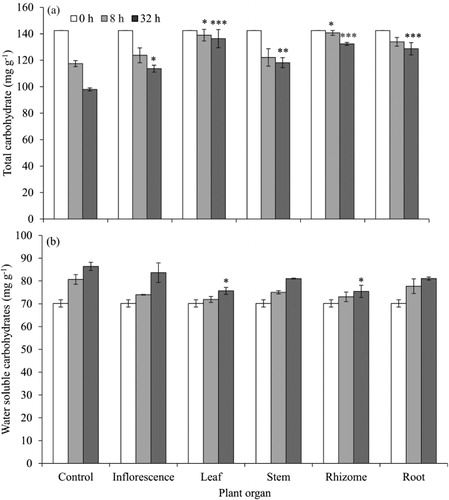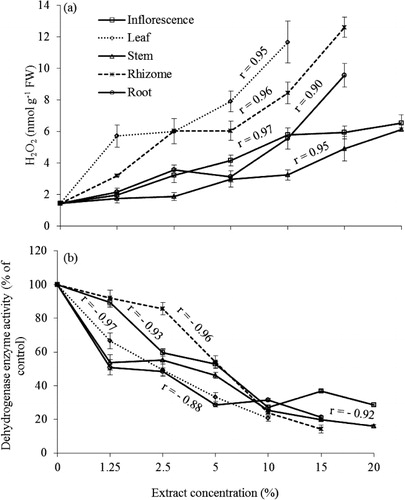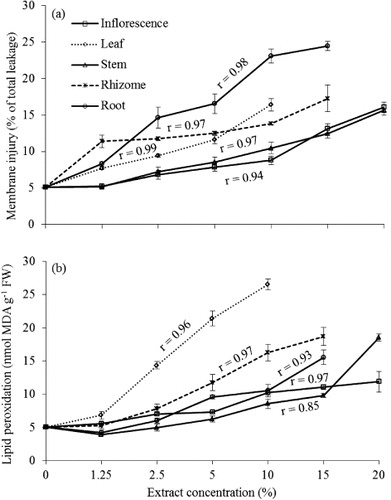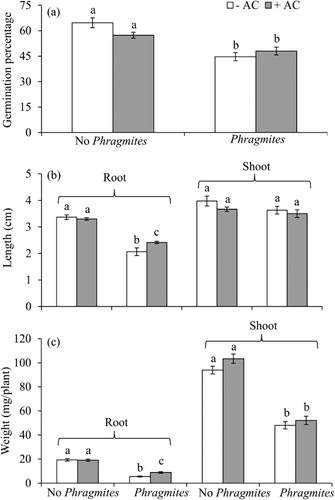Figures & data
![Figure 1. Effect of aqueous extracts (5%) of different organs of P. australis on liquid imbibitions of lettuce seeds expressed in fresh weight [mg. (100 mg seed)−1] throughout 32 h. Values are mean±standard error (n=3). ***, ** and * indicate significant differences from control at P ≤ 0.001, P ≤ 0.01 and P ≤ 0.05 respectively after Dunnett's test.](/cms/asset/be3cd973-007a-4fad-bb34-77004816d32b/tjpi_a_835879_f0001_b.jpg)


Table 1. Results of two way ANOVA (F-ratios) showing the effects of different organ materials (M) of P. australis, extract concentration (C) and their interaction (M×C) on germination indices, biometric, and biochemical parameters in lettuce.


Table 2. Effect of osmotic potential at various concentrations on germination, growth, and physiological parameters of lettuce. Values are mean±standard error (n=3).
Table 3. Results of paired t-tests showing the effects of different organ of P. australis and extract concentration considering osmotically adjusted control on germination indices, biometric and physiological parameters in lettuce.


